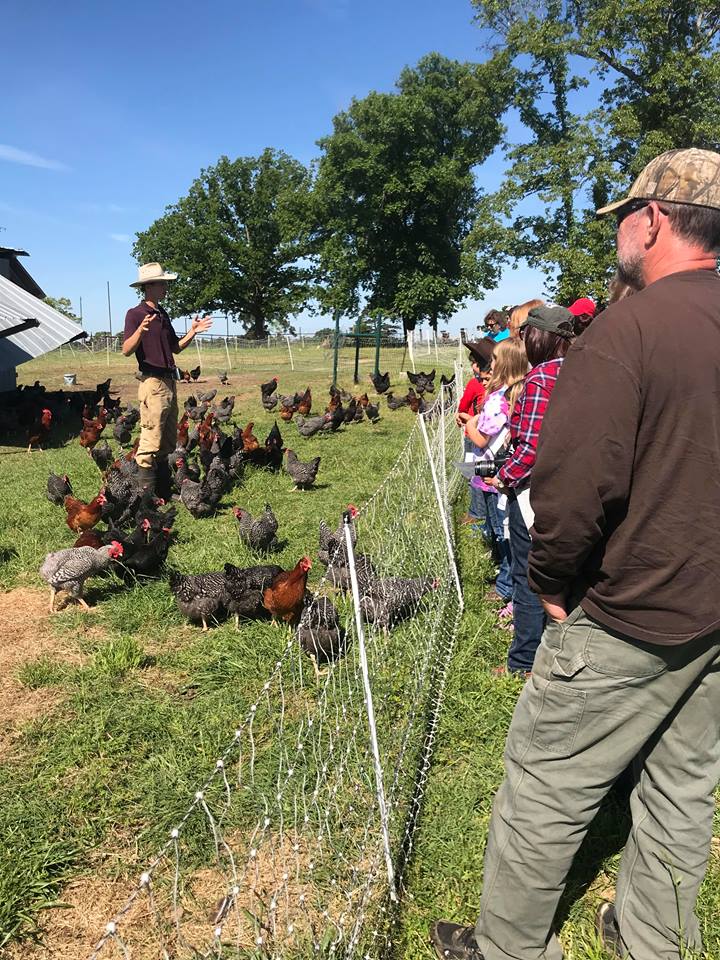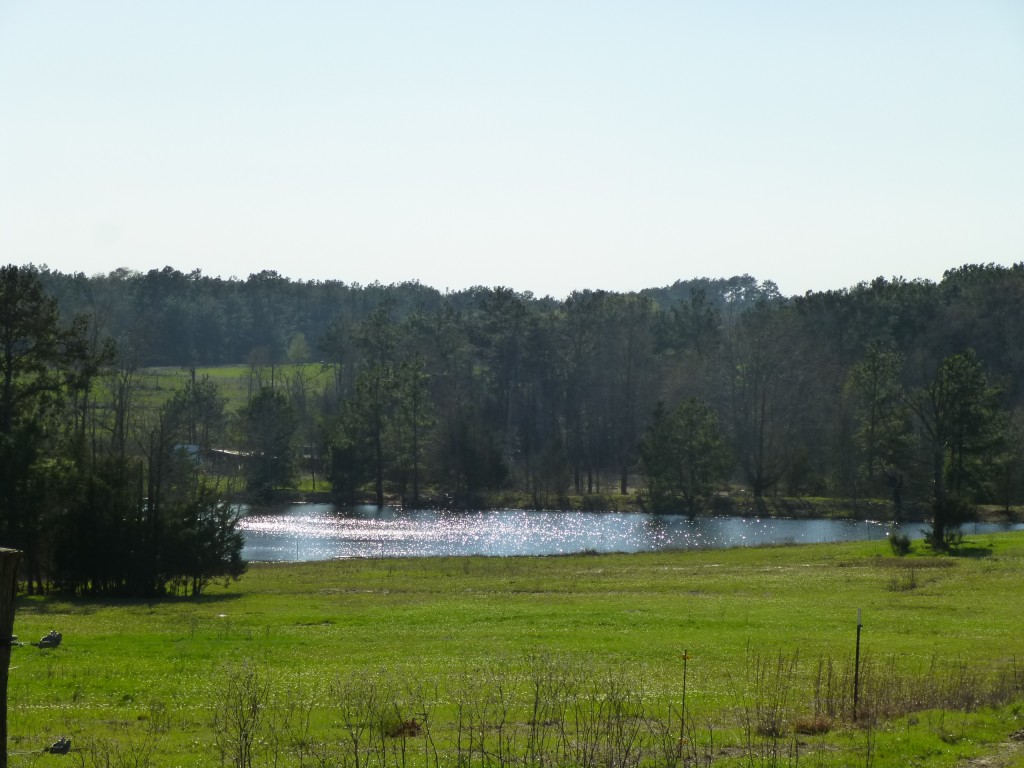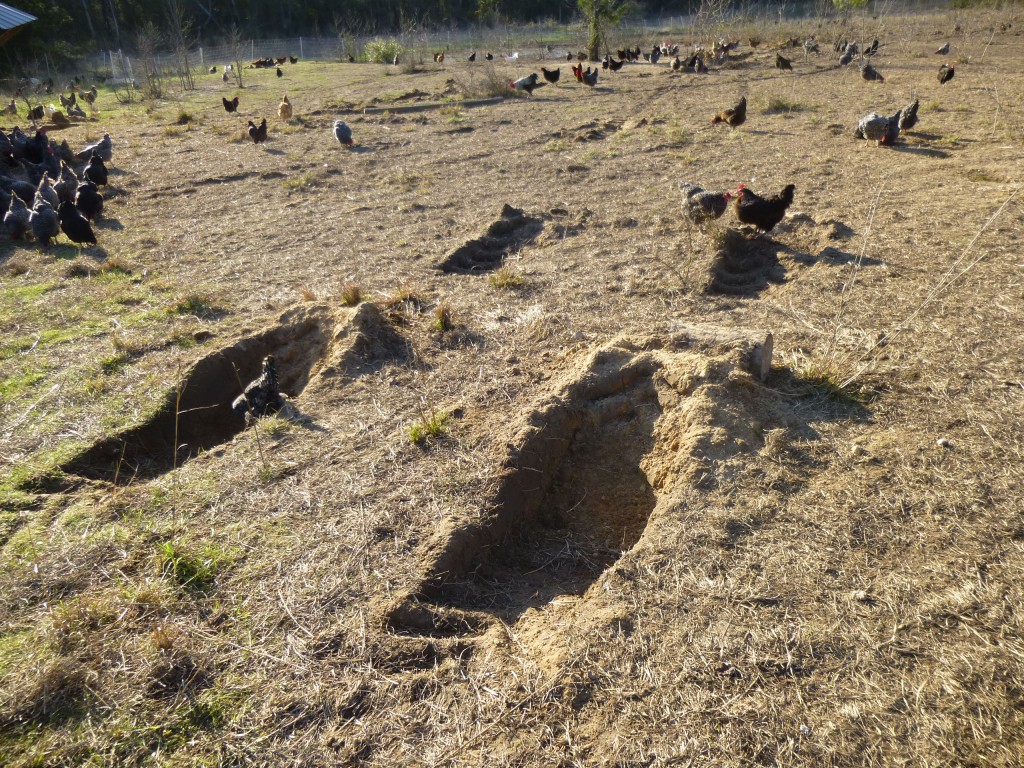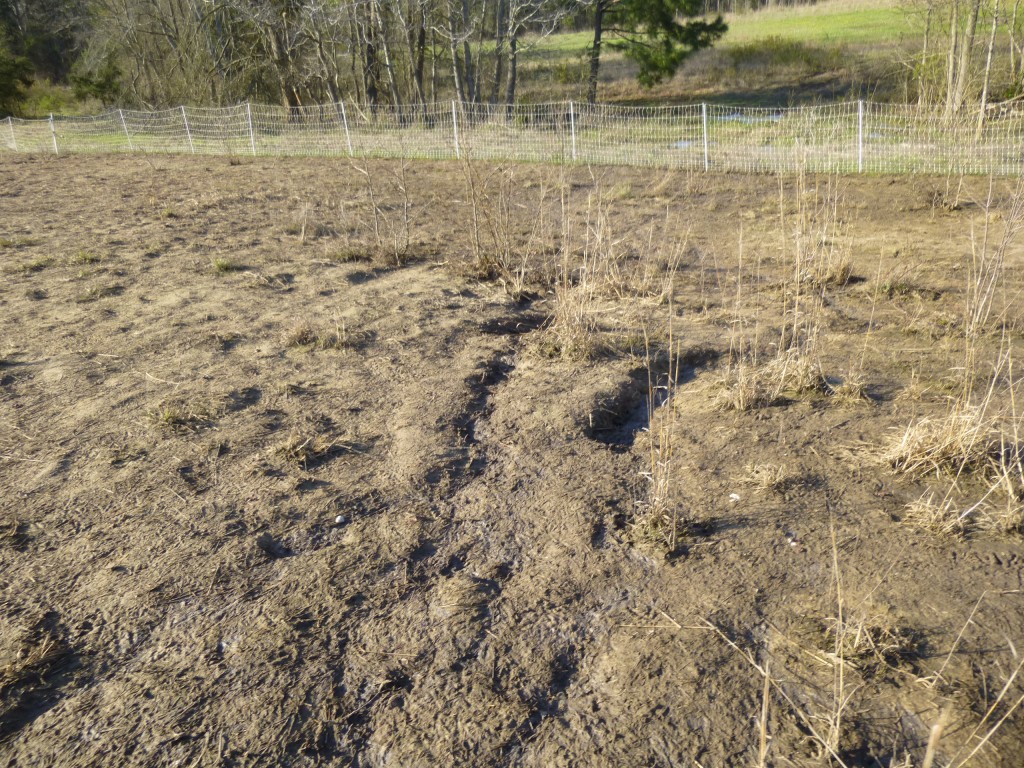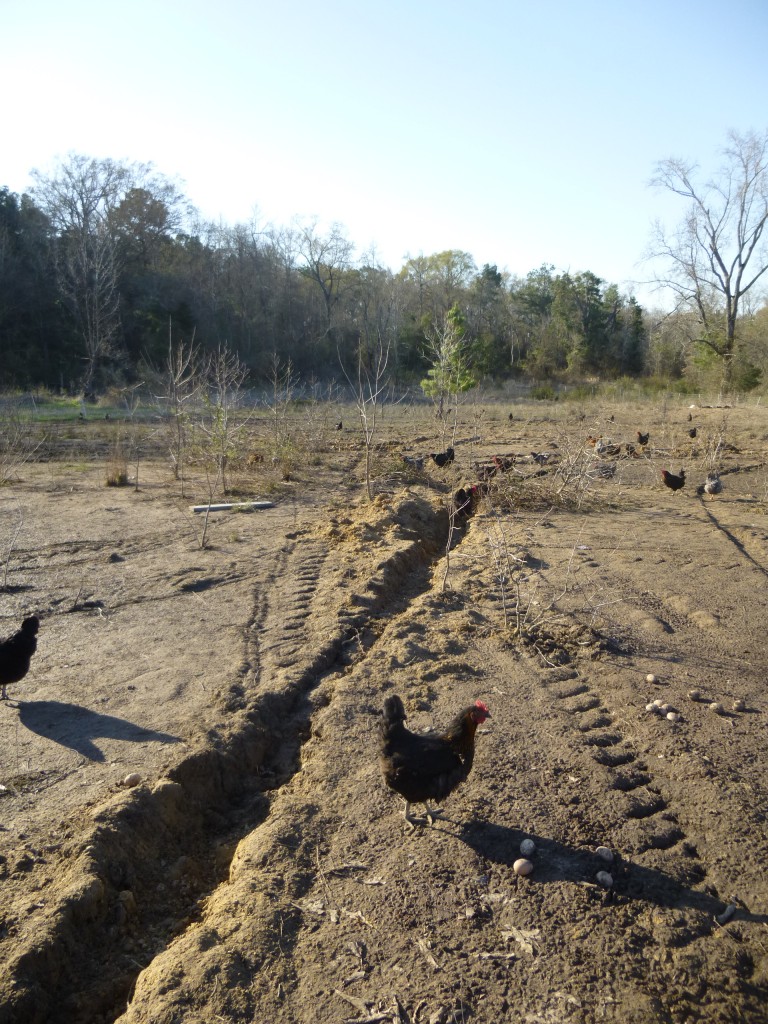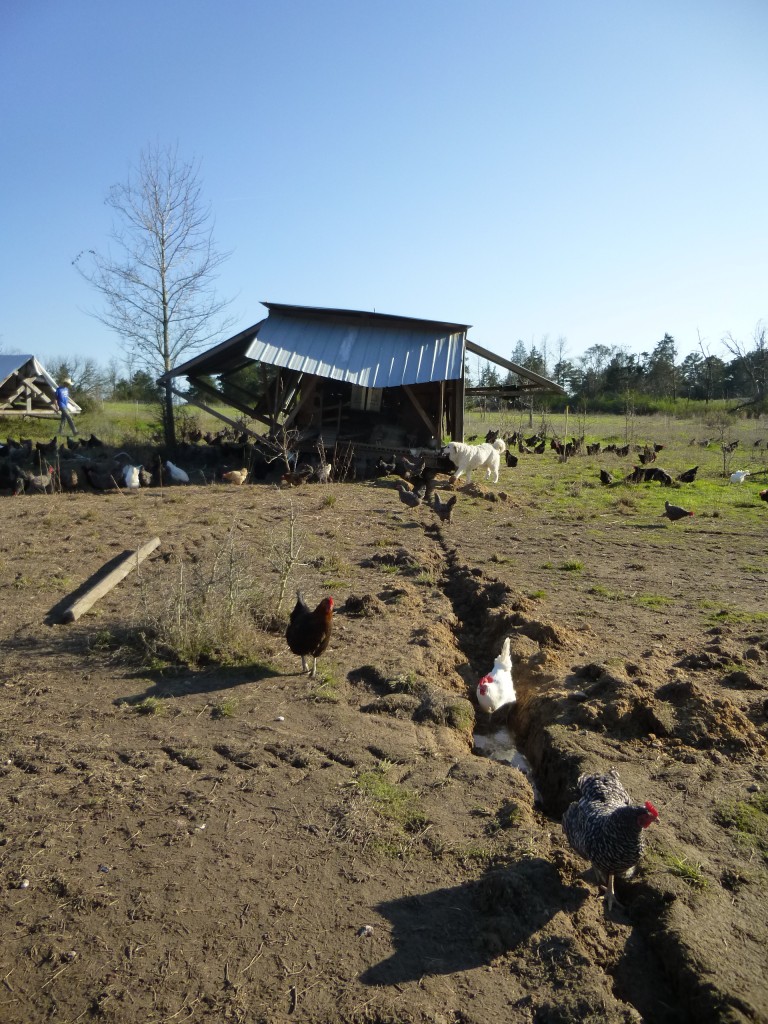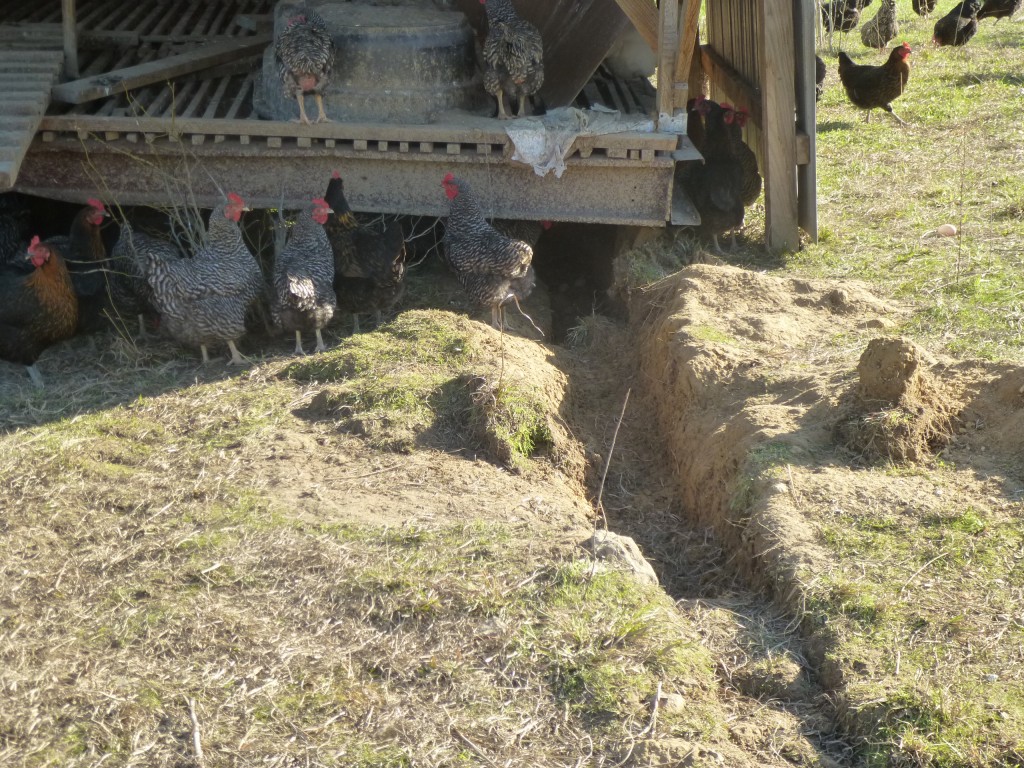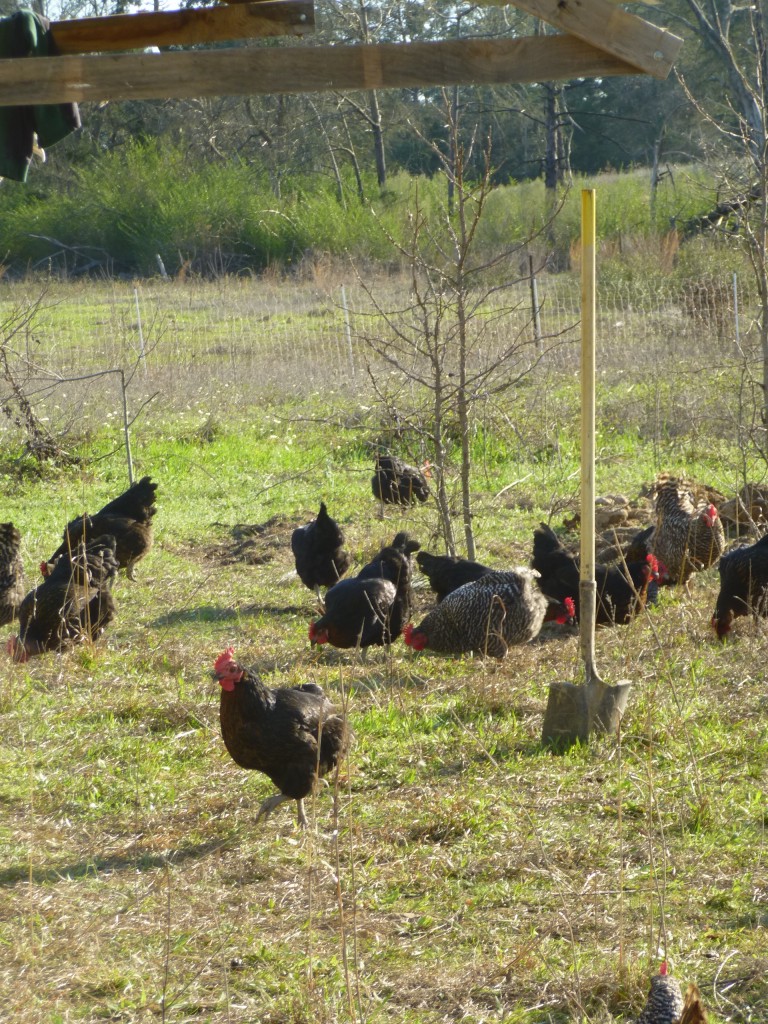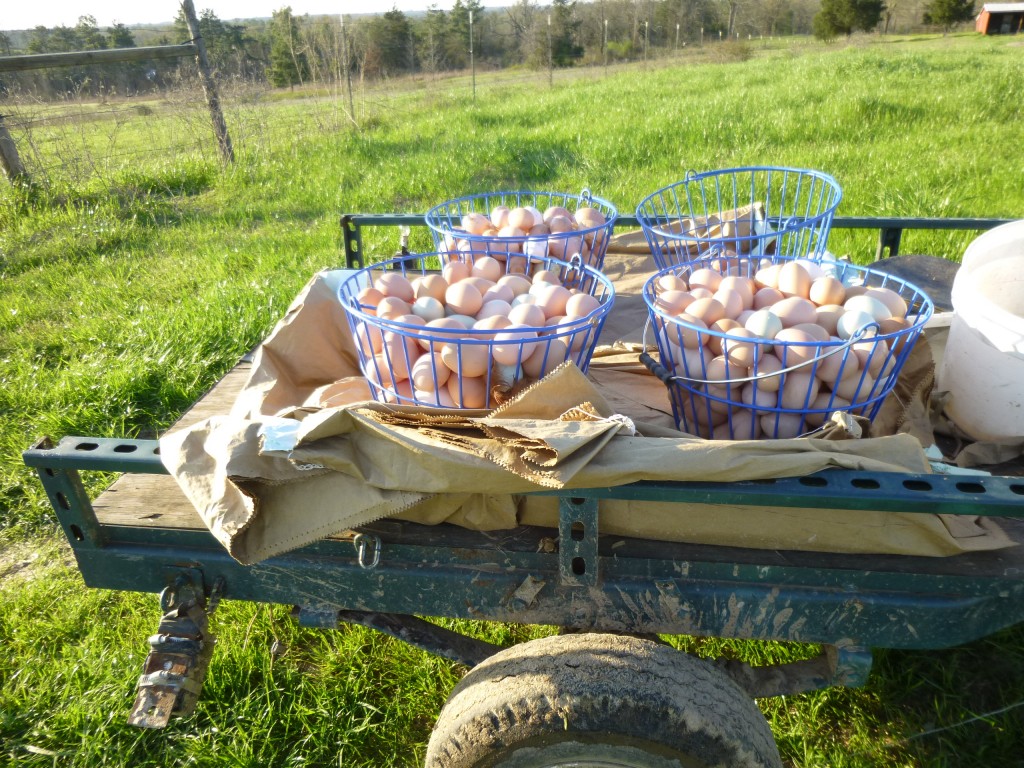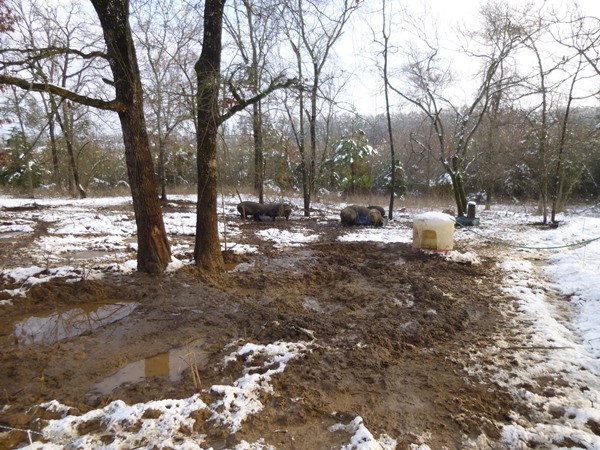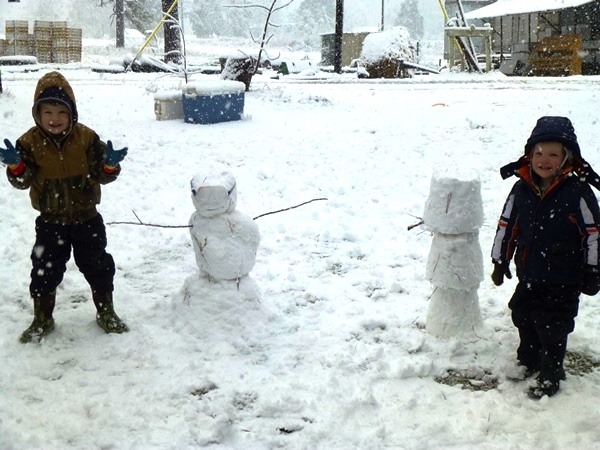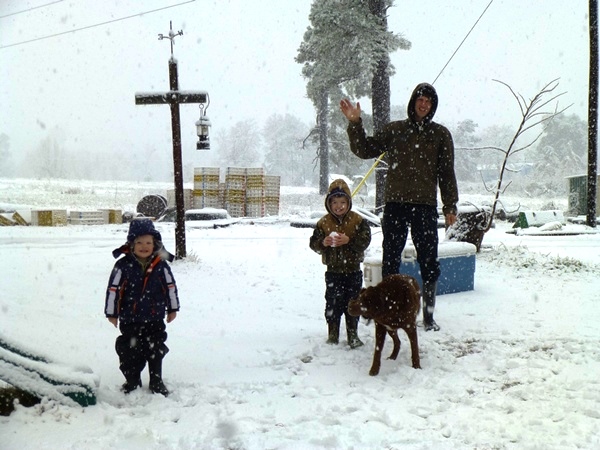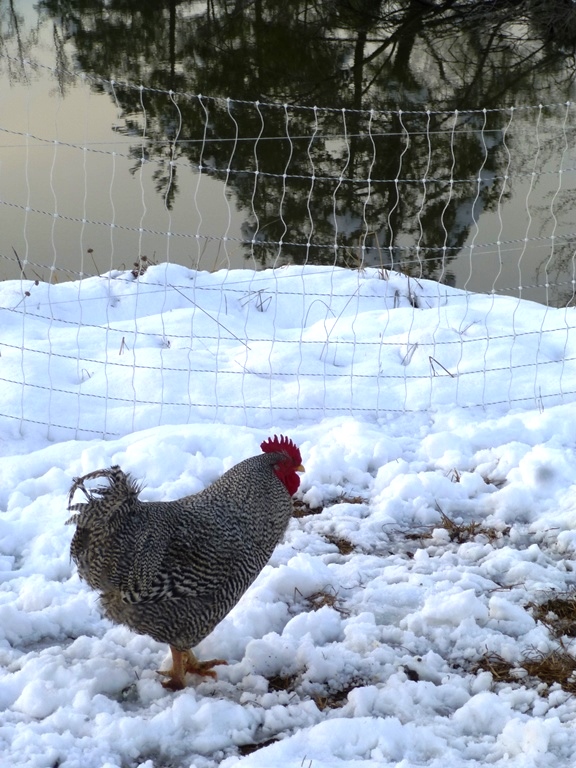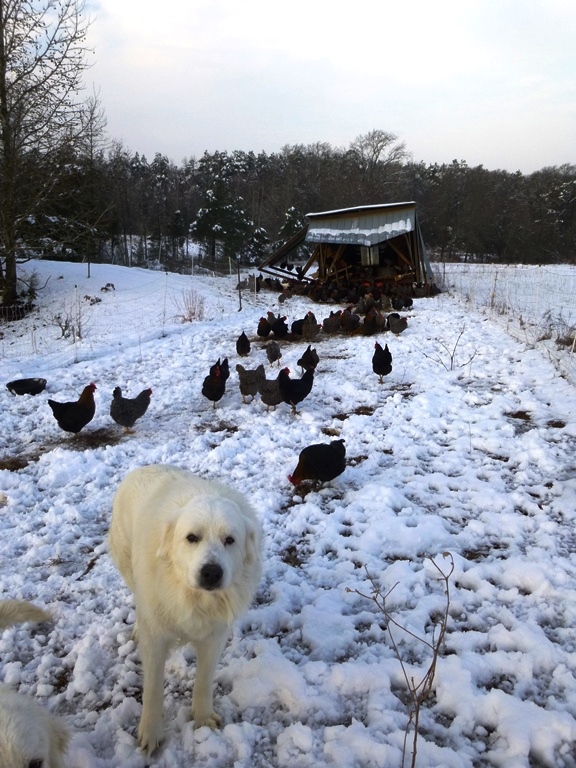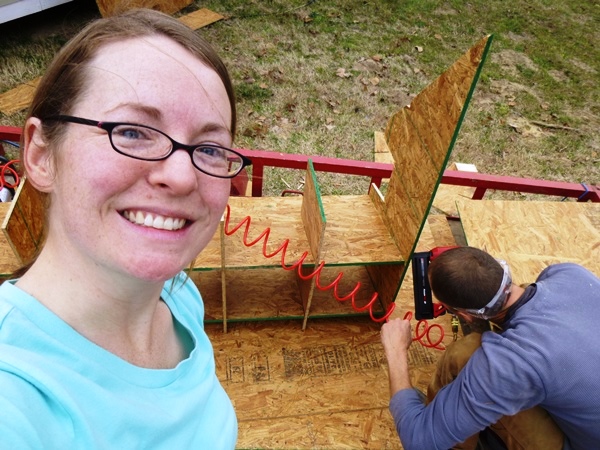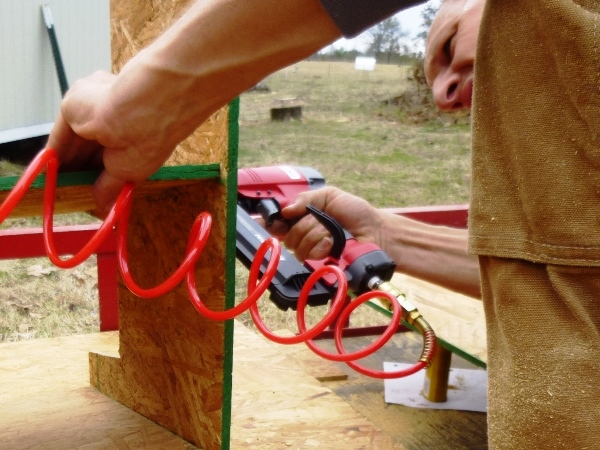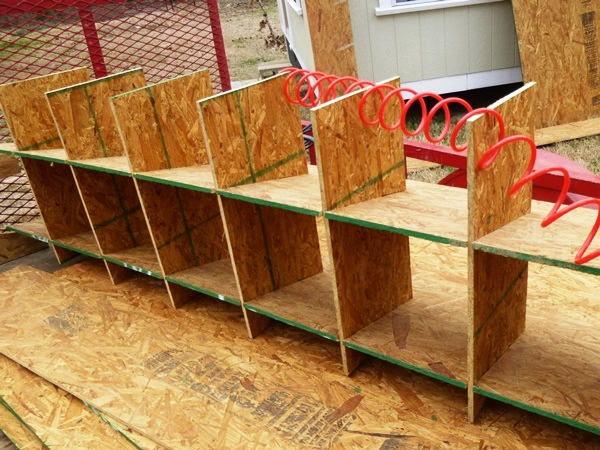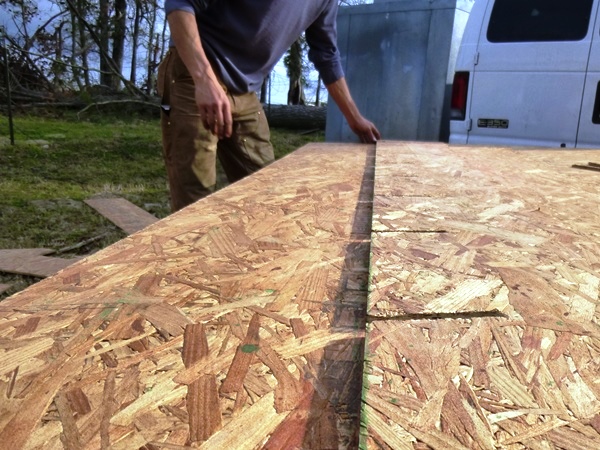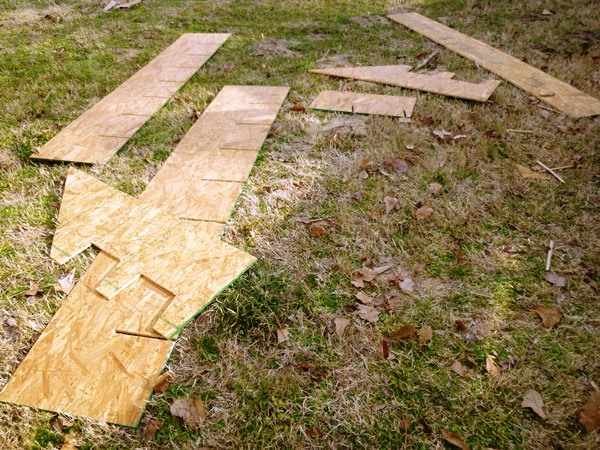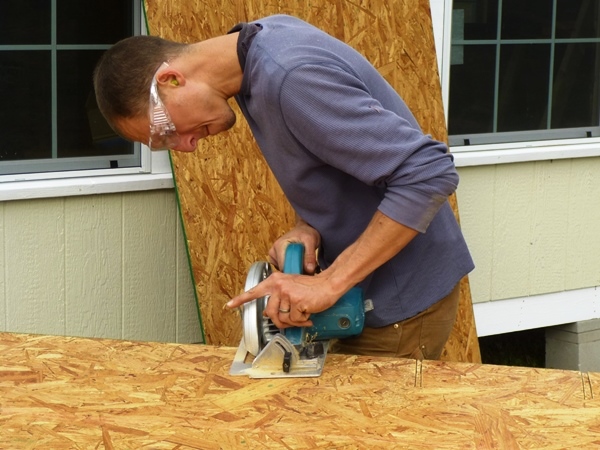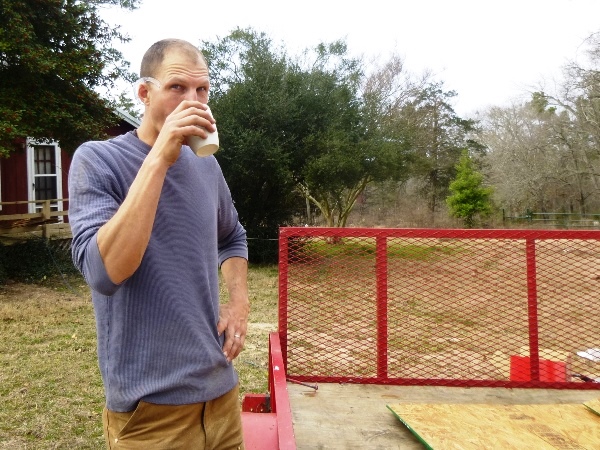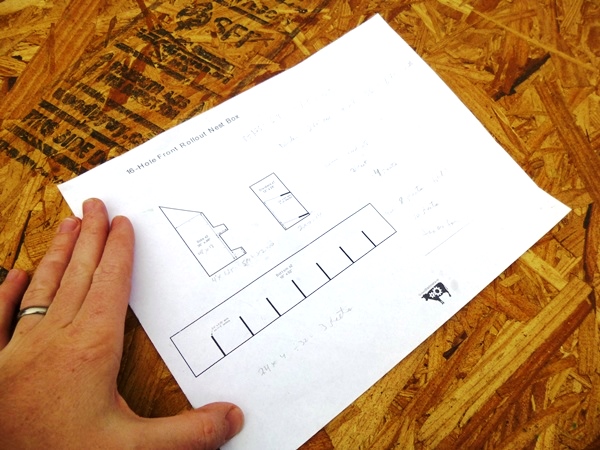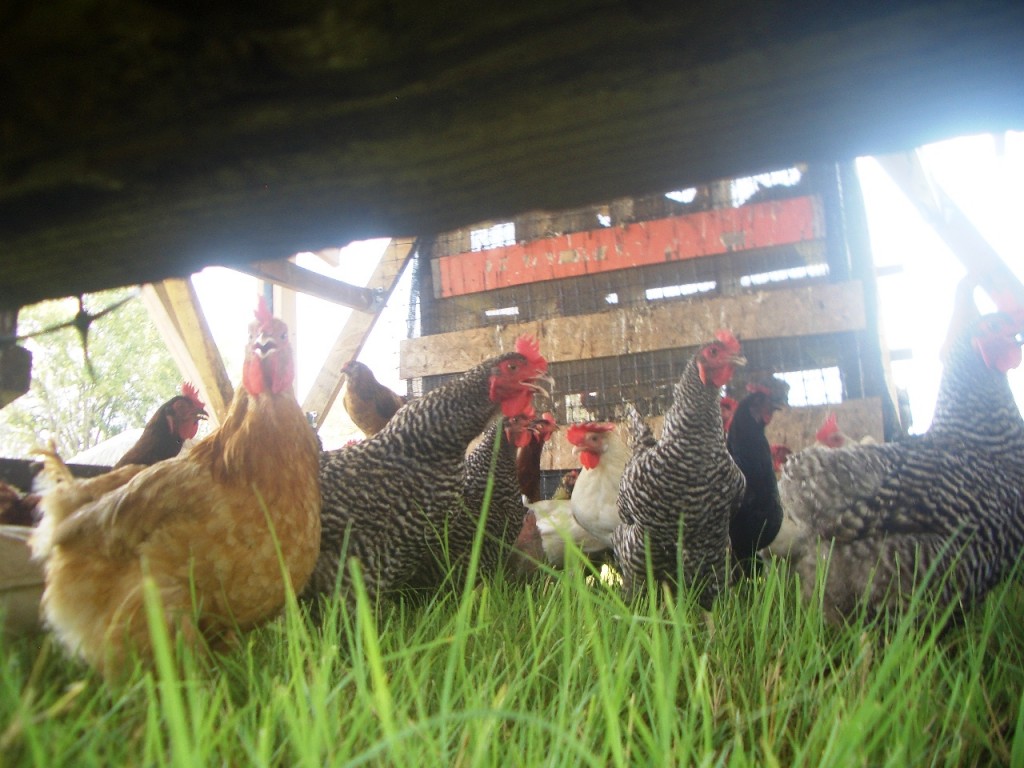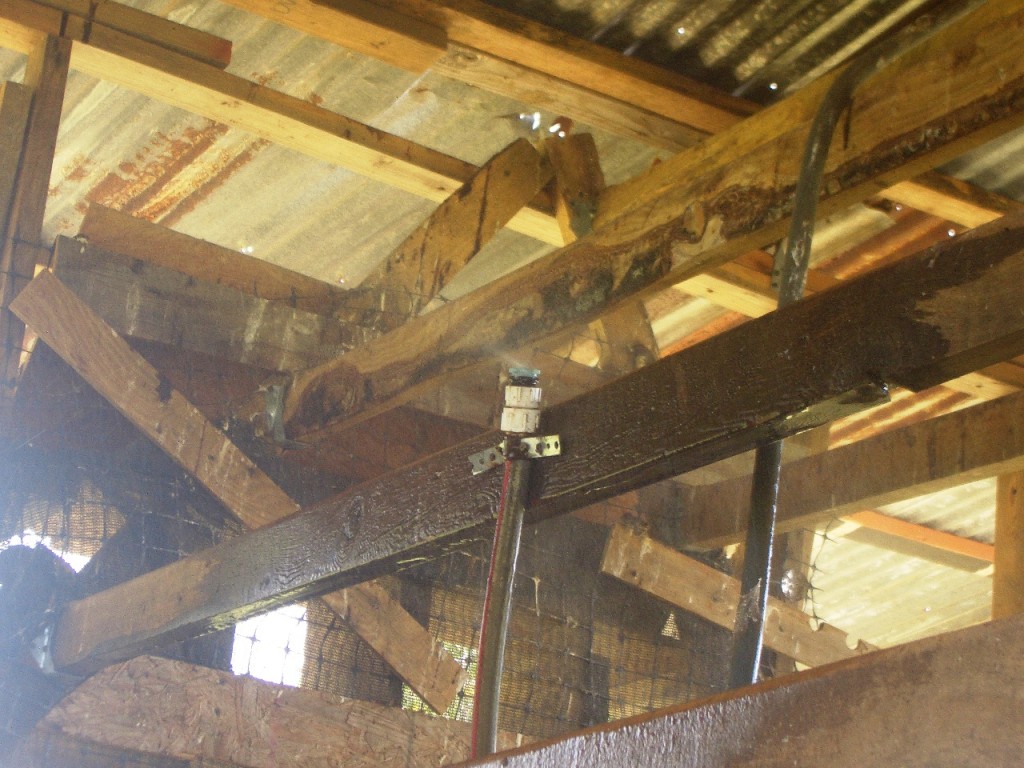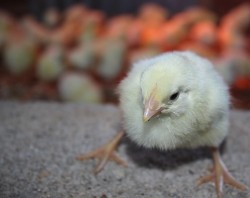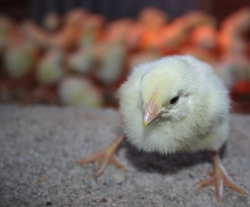Here is a fun article for you. Our apprentices, James and Anna, arrived to the ranch way back in March of this year from South Korea (after a week of visiting James’ family). We had planned to let them transition to farm life gradually, considering that they had just moved all the way from Korea and were still recovering from jet-lag! It was supposed to be an easy week to move in, unpack, learn their new kitchen and pantry supplies, and get acquainted with East Texas.
But I suppose that would have been a false introduction to what farm life is really like… Instead the sky decided to dump on us over 7 inches of rain in one day, and our electricity got wiped out right after James and Anna arrived at the ranch. And it stayed off… for over 30 hours! Everything at the ranch is electric, so we couldn’t even feed them except for cold leftovers or while out on the road. But they jumped right in and helped with a (very wet) delivery we had that week and have been cheerful helpers ever since.
We had intended to do a formal introduction via this newsletter back then, but of course were totally snowed under by baby Matthew’s arrival in early April and the start of farmers market at the end of May. We’re finally at a more even keel now, so without further ado… meet James and Anna!
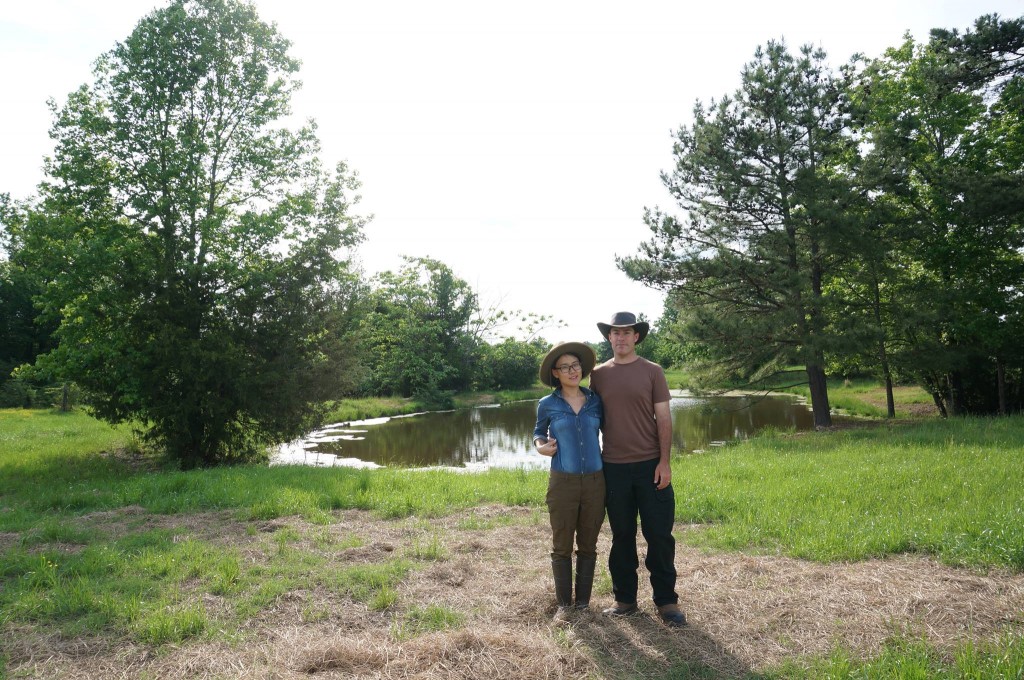
Where are the two of you from?
James: I’m originally from a small mile plus high mountain town in Arizona, named Heber/Overgaard.
Anna: I’m a Korean from Seoul in South Korea.
What are your individual backgrounds?
James: As I mentioned I grew up in the mountains of Arizona, before eventually heading down to the desert where I attended the University of Arizona. I double majored in Media Arts and Creative Writing. After university I headed to Los Angeles to make my fortunes as a movie writer and director. As with most who pursue that lofty dream it did not pan out for me. After five years in L.A. I left the country and headed to Seoul, South Korea to teach English. Living abroad was a wonderful experience. I stayed in Korea for seven years working as a teacher at a public middle school. I had met me wife (Anna) while living in L.A., but she returned to Korea shortly before I moved there and eventually we married in Korea before heading back to the U.S. to pursue our farming dream.
Anna: I was born and grew up in a quite big city right next to Seoul which is the capital of South Korea. My university is in Seoul as well and as it so happens, I majored in Media journalism, that sounds pretty similar to James’s majors. I had been living in a city in my whole 30 years and even my family and most relatives are living in cities. As previously stated, it might be easy to guess that I didn’t have many chances to experience farming so I hadn’t been interested in farming before James declared to be a farmer very soon in the future. He talked about farming and livestock all the time and encouraged me to work in one CSA (Community Supported Agriculture) team in Korea. Through the CSA, I learned many things about agriculture.
What got you interested in farming?
James: The catalyst for me was the combination of wanting to eat healthy food and not enjoying my job. I started researching ways to provide my own food then discovered you don’t have to be born into farming or be rich to get into the trade. After that I spent three years testing the idea before I quit my job to become an apprentice at Shady Grove Ranch.
Anna: It is the same as James said. And plus, I can give a more healthy and happy environment for my family.
What do you find most interesting about sustainable farming?
James: The thing I find most interesting and enjoyable is the synergy between man and land. Land doesn’t do well left to itself and the idea of being able to shape and improve the land and build something and watch its betterment over a lifetime has quite the pull for me. It’s the project that never ends, it’s multi-generational if you manage it correctly, and the value it adds to the world is a very rewarding thing to participate in.
Why did you choose Shady Grove Ranch?
James: Because we got rejected by Polyface [a sustainably-minded farm in Virginia that has pioneered the farm-apprenticeship movement]. Haha. Actually Shady Grove Ranch ended up being the perfect fit for us. Matt and Jerica are basically doing everything we want to be doing and they’re of similar age, and the timing was right for them and us. We placed an ad on the Eager Farmer website and they contacted us. We started a dialogue and soon after we both agreed it would be a great fit. I also loved the idea of working with two engineers. I knew I would learn much more than just the ins and outs of pastured meat farming.
Anna: When we were looking for a farm to have internship, James told me we would need to choose between Shady Grove Ranch and a farm in Virginia. I said I liked Shady Grove Ranch more because Texas looks better and Matt and Jerica who are the owners of Shady grove ranch do most things by themselves like building mobile houses or marketing so I was sure James and I would learn a lot from them. Also, I had a good feeling with Matt and Jerica’s attitude and personality. I never had talked with them before I came to this farm but I could feel by our email conversations.
What did you like to do for fun before you started farming?
James: Before I got interested in farming I was doing a lot of hiking in Korea. Korea has 21 national parks, and I visited and summited the highest peak on every one. It took me two years to do, but was a great adventure that allowed me to see the country. Many of the parks I visited more than once.
Anna: I had visited famous restaurants and cafes with friends to taste delicious foods. I (and most Koreans )didn’t have enough vacation or days off so tried to do something or anything on the weekends. Like Hanging out with old friends, date, go to walk… So I researched interesting places that have delicious food was the thing I did many times when I could.
What do you do for fun now?
James: Now I go to Walmart on my day off. Haha… Just kidding. We’re trying to see the local area when we can. We visited lake Caddo and Big Cyprus Creek. I also enjoy reading if I have the energy after a full day of farming.
Anna: It is not for fun but I am kind of enjoying baking and cooking although I have failed some times. And gardening.
What has surprised you most about the farming lifestyle?
James: I always knew farming and building your own farm business was extremely tough. However, when I first got here it really hit me hard at how much sweat must have gone into building Shady Grove into what it is now. I did enough research to anticipate the lifestyle more or less, but the work life balance is certainly a challenge. I guess that’s why farming is considering a lifestyle and not a job.
Anna: I realized that you don’t need many things to maintain the farming lifestyle. Of course, you need farm gear, tractors, truck and fences. But except stuff for farming, you are able to be self sufficient . For example, TV, extra shoes and clothes, nice furniture, extra food and nice car are not necessary or expected. The farming life is simple and not wasteful.
What is your favorite thing about being farmers?
James: Being able to spend my days working outside with nature and of course the farm animals. I also enjoy working on a variety of different projects so it’s nice to work on and complete projects instead of doing the same thing or things every day that most jobs offer. We’re always trying to innovate and get better and you can see the results of your work and that’s very satisfying.
Anna: I don’t do a lot of work as a farmer yet, I love to watch happy animals. These animals are healthy and happy and I really appreciate healthy food James are helping to raise.
What is your least favorite chore?
James: Currently my least favorite chore is feeding the pigs. I hand feed about 700 pounds of feed each morning and the pigs get a bit ornery and start bumping into me and it can get a little chaotic. However we’re working on changing the feed set up to a self harvest system for the pigs so hopefully that won’t be my least favorite chore for much longer. Even though it’s my least favorite chore the pigs are indeed healthy and happy, it just puts more chore into the chore for me. 😃
Anna: I am still afraid of chickens. I am getting more brave but it is a little bit hard for me to catch chickens. why? I don’t know. I feel they would attack me or I am afraid if I could hold them too hard and hurt them.
